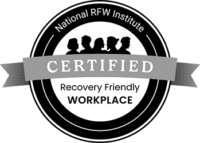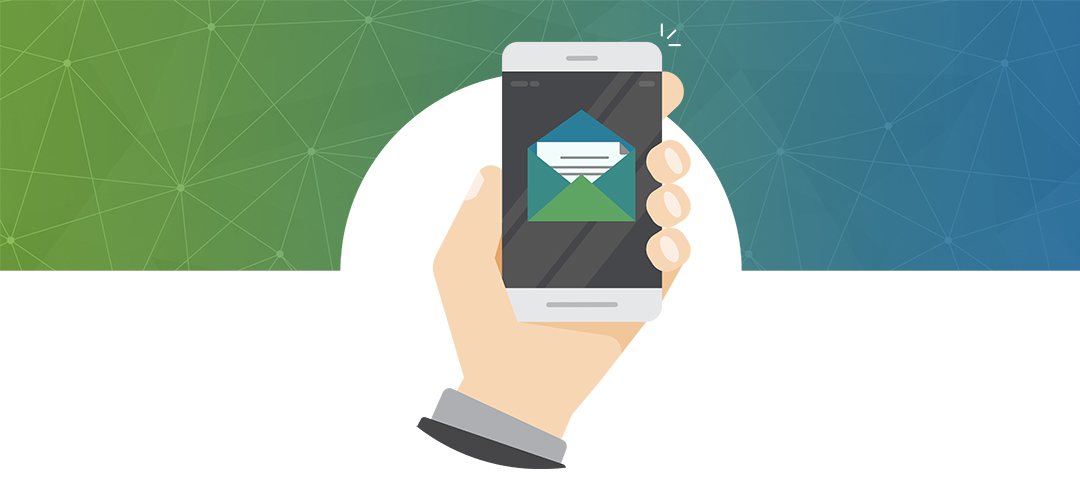A Day in the life of a Healthcare Caseworker with Concierge Care™
Most case workers have a daunting and nearly impossible task with hundreds of cases and precious little time, how can they really be there for each person, especially be there in a moment of truth when they are truly needed? Now they can…
We are on a mission to help caseworkers as they are the “true grit” of a healthcare plan, especially Medicaid and Medicare, but it extends to all plans including ACO and MCO. If we want to take costs out the system we need to help them. If we want to improve the quality care provided by caseworkers, we need to provide these dedicated professionals a way to more effectively communicate with their patients and a way to improve the patient to caseworker ratio.
Concierge Care is a practical and scalable way for case workers to drive success using a measurable and evidence-based “mobile concierge”. This methodology works equally as well for the patient and the case worker, while also bringing smiles to the faces of healthcare plans’ CFOs, COOs, and CEOs as it reduces costs. Smiles are a good thing and we need more of them!
Please refer to our previous blog for an overview of Concierge Care methodology and evidence based bench-marking and mapping. Increasing Patient Adherence through Concierge Care Methodology
We Need to Change: Behaviorally Speaking
Research shows that caseworkers share two common “learned” behavioral traits with their patients that contributes to non-compliance and poor patient outcomes:
Believability: Many caseworkers actually do not believe, that given their work load and growing patient healthcare issues, that they can do an effective job, even when that fact is just in their own mind. This is the exact same behavior causes patients with chronic or serious conditions to not be compliant; they do not believe they have the capacity to comply so they actually shrink from the task.
Future Outlook: And for many more caseworkers, they only see a future only getting more difficult with more issues and they do not believe the future is bright for improving their day-to-day job and this causes reduced behavioral “resilience”; again the exact same phenomena in their patients causes them to “give-up” or give far less support than they could.
So, let’s meet Jolene, a case worker for a Medicaid plan, covering high risk and cost prenatal. And experience her day and her patients’ life with and without Concierge Care™.
A Day in the Life of a Caseworker: High-Risk Obstetrics Patients
Without CONCIERGE CARE:
The typical case load is significant: it is always heavy, jam-packed with need – and not enough time to “do it all”.
Jolene is an RN, experienced dealing with pregnant mothers who are at high-risk for complications and who are in a lower-income bracket. This month, she has almost 200 expectant moms to worry about. Furthermore, there is no such thing as a “normal” high-risk pregnancy, as so many factors govern how a pregnancy progresses and what type of care results in a healthy baby and mom.
Monday, 8:00 AM: Jolene arrives at her office & discovers she has 21 messages on her office answering machine – slightly more than 10 percent of her caseload. Each caller experienced problems or had concerns over the weekend, which now need her attention. (Budgetary limits prevent caseworkers from being “on call” overnight or on weekends.)
As Jolene starts to return each call, she worries about the 9 new cases she was just assigned over the weekend (the OB Clinic saw patients on Saturday, and now she must catch up with these new assignments).
There is never enough time to visit each patient, face-to-face, as her patients live across a broad area that is largely rural. Phone contact is the best – and frequently the only – means of contact. Given the new patient records she received yesterday, she is especially concerned about 3 patients who have been highlighted by their physician as having especially troublesome concerns – but for right now, she must focus on the patients who called her over the weekend.
12:30 PM: After arranging for doctors appointments for 4 patients, reassuring & explaining symptoms/pregnancy stages to 14 patients + calling to check on 3 patients who wound up going to the ER – the morning & lunchtime have flown by. Meanwhile, more incoming messages have landed in her inbox, and Jolene still hasn’t had a chance to check in with the patients who were just assigned to her over the weekend.
3:00 PM: In the last hour, Jolene was able to grab a sandwich, and has started to call her 9 new patients. It is frustrating, however, as the patients are hard to reach. (Some phones ring incessantly, others are constantly busy.) Of the 9, she reaches just one patient who listens briefly to the services offered. That leaves 3 patients, for whom she could leave a voicemail message. Unfortunately, the 3 patients she is most concerned about in this new group are not among those she could reach.
6:00 PM: Jolene can’t believe the clock already says 6 PM – the day has flown by, and she is still behind in her patient outreach. Her plan of action calls for reaching out to each of her patients at least 3 times during each pregnancy trimester – and that means she must try to catch up on her calls tomorrow, so she doesn’t fall even further behind.
WITH CONCIERGE CARE:
Monday, 8:00 AM: Jolene arrives at her office & discovers she has 21 messages on her office answering machine – slightly more than 10 percent of her caseload. Each caller experienced problems or had concerns over the weekend, which require her attention this morning. (Budgetary limits prevent caseworkers from being “on-call” overnight or on weekends.)
Before Jolene starts to return each message, she opens the Gold Mobile Concierge Care Module on her computer and assesses her list of subscribers for the “Care Communications Program”.
First, Jolene sends an ad hoc Care Communication to each of the 21 patients who called, telling them she got their message & will be contacting them that morning.
Jolene can immediately see that the 9 new cases she received over the weekend, signed up for Care Communications during their initial visit to the Clinic’s OB. Jolene smiles to herself to see how much help she can give her patients with Concierge Care. For starters, Jolene is so busy that morning, she doesn’t have time to call each patient individually – but she can rest easy since the automated Concierge Care Communication system has already sent each new patient a brief message to her phone welcoming her to the program. Even though Jolene hasn’t spoken with these women yet – they already know her name, as the automated message is signed with her name and even written in her “style of speaking”.
Then , Jolene sees on her Concierge Care “dashboard” that a Care Communication from “Your Baby, Today” has already been sent to all 200 women currently in the program, containing general information about the baby’s stage of growth + changes to mom’s body). NOTE: When each patient signs up for the program, each woman is placed in a
“messaging group” associated with her due date. This means each one of Jolene’s 200 patients can receive a Care Communication appropriate to the stage of each mom’s pregnancy. These messages are also signed with Jolene’s name.
Jolene can quickly update her subscriber database – “graduating” patients who delivered their babies + assigning “message categories” to patients with special concerns (high BP, diabetes, etc.), too, as conditions change or develop – or as the OB notifies Jolene of special concerns.
The automated Concierge Care Communication system automatically sends 2 messages per week to each patient:
One Care Communication is informational, and addresses baby’s stage of growth & what a mom should expect re changes to her body: This group of Care Communications is called: “Your Baby, Today”.
The other Care Communication is informational/supportive about each patient’s condition (high BP, diabetes, etc.), and is called “Mom-Care”
In almost a blink of an eye, Jolene was able to “touch” all of her existing patients + introduce herself—all through one seamless dynamic system called Concierge Care.
With this help — Jolene is now able to spend the morning on the phone, returning the calls from each of her 21 patients who left her messages over the weekend. She even hopes to be able to make face-to-face visits with women who have particularly challenging cases, too.
Jolene is relieved that despite budgetary constraints at her organization, that she is still able to engage with her patients, and provide them with information and guide them through each stage of their pregnancy via Care Messaging – while she takes care of the 21 emergent needs patients who contacted her office over the weekend.
Meanwhile – 4 potential crises are averted:
3 patients expecting their first child are alarmed by some changes they’ve experienced in their bodies. They don’t remember the doctor ever saying anything about this and are thinking of going to the ER. But because of the Care Messaging Program, they know that their symptoms are simply normal changes their bodies are experiencing. Jolene sends each an “ad hoc” Care Communication that contains a link to a short video about the experience of being a new expectant mom and all the attendant changes that are to be expected.
Additionally, 1 mom who hasn’t been pregnant for ten years has forgotten some of her experiences and is nervous about her condition. Care Messaging again supports Jolene’s outreach; Jolene sends an “ad hoc” Care Communication with an audio link containing a brief recording of Jolene’s voice that reassures her that all is OK & that the changes she is experiencing are all normal. Bottom line = massive cost savings in forestalling 4 unnecessary and costly visits to the ER.
12:30 PM: Jolene with all of the communication she was able to do this morning she’s able to take a normal lunch break, knowing that her patients are informed and being cared for.
1:30 PM: Jolene returns to the 3 patients among her 9 new cases, who have especially troublesome concerns. Because she is able to be on top of her case load, she can spend the extra time required to get through to each one, reassuring them about their pregnancy and checking up on their condition state. She sends each of them a Care Communication to their phones, containing a link to a video (“click here to watch”). Jolene is now satisfied each expectant mom understands the seriousness of her respective condition, and the importance of following the doctor’s orders every day.
2:30 PM: Jolene receives urgent Care Messaging questions on her laptop from 7 patients. Jolene calls them back. 4 patients are worried they are experiencing labor, but after talking with them, Jolene is able to discern they are Braxton-Hicks and tells the patients to keep her informed if their condition changes. 3 patients are experiencing symptoms of heat stress, and Jolene counsels them to hydrate themselves and rest immediately. Jolene sends all 7 patients an individualized Care Communication, containing a link to a video about either Braxton-Hicks or heat stress symptoms. All 7 cases were well-handled with Care Messaging augmenting Jolene’s calls, making it unnecessary for the patients to go to the ER.
3:00 PM: Jolene begins calling her “high touch” list – established patients on her general case roster who merit extra attention due to crises in their home or crises with their pregnancy. Ideally, she likes to check in personally with this group once every week – and with Care Messaging, she can easily do this, either via “ad hoc” Care Messaging (individualized to each case) or via a personal phone call.
6:00 PM: After a long and hectic day, Jolene feels a great sense of accomplishment. She cannot believe all the things she “checked-off” on her “to-do” list today!
Jolene was able to contact (via phone & Care Messaging) with all 21 patients with emergent concerns that developed over the weekend, and resolve every concern.
Additionally, Concierge Care automatically sent Care Communications to welcome all 9 new patients, with an intro message signed by Jolene.
Because of Concierge Care’s automated & targeted messaging system, Jolene also had time to track down the 3 new patients in this group with special concerns, until she talked with them personally.
Using Concierge Care targeted messages & personal phone calls, Jolene then resolved all 7 urgent questions she received that day from her patients via Concierge Care (which were delivered to both Jolene’s desktop & tablet, so Jolene is always able to see how Concierge Care interacts with her patients & respond).
Last but hardly least – Jolene is “on top of” her normal case load, because Concierge Care enables her to essentially “check in” with her patients: All 200 of her patients “heard” from Jolene today – with a “personal” message delivered to each patient’s phone in the communication style each patient prefers, with content relevant to that patient’s condition – and signed with Jolene’s name.
BOTTOM LINE: Gold Mobile’s Concierge Care provides Caseworkers with a dynamic “Care Messaging” tool which enables one-on-one remote patient engagement, “in the moment”.
Easy to use for caseworker & patient
Messages delivered to patients’ phones; responses delivered to caseworkers’ tablets & desktops.
Concierge Care can also provide free lifeline phones to Medicaid and other qualified patients
Patients feel cared for as individuals
Patients’ needs are addressed, rapidly and thoroughly
Improved communications between caseworkers & patients
Caseworkers case load is more easily managed
Caseworker can “touch” patients without becoming overloaded with work
Caseworker can more clearly focus on emergent needs
ER visits are avoided & crises are averted
Improved patient health & outcomes
Good relationships between patients, caseworkers, and healthcare providers develop
Cost of healthcare delivery is more efficient
Win-Win for all: patients & caseworkers
Please Join GoMo Health in This Mission
If you are interested in helping caseworkers. Here are ways you can help:
Your Story… we would love to hear more case worker stories
Education… we are happy to do an online educational webinar for your organization
Research… we are looking for more case workers, cognitive neuroscientists, and behavioral psychologists to work with us
Pilots and Clinical Trials… we are looking for a few more field deployed pilots and their research.







Find Us Online